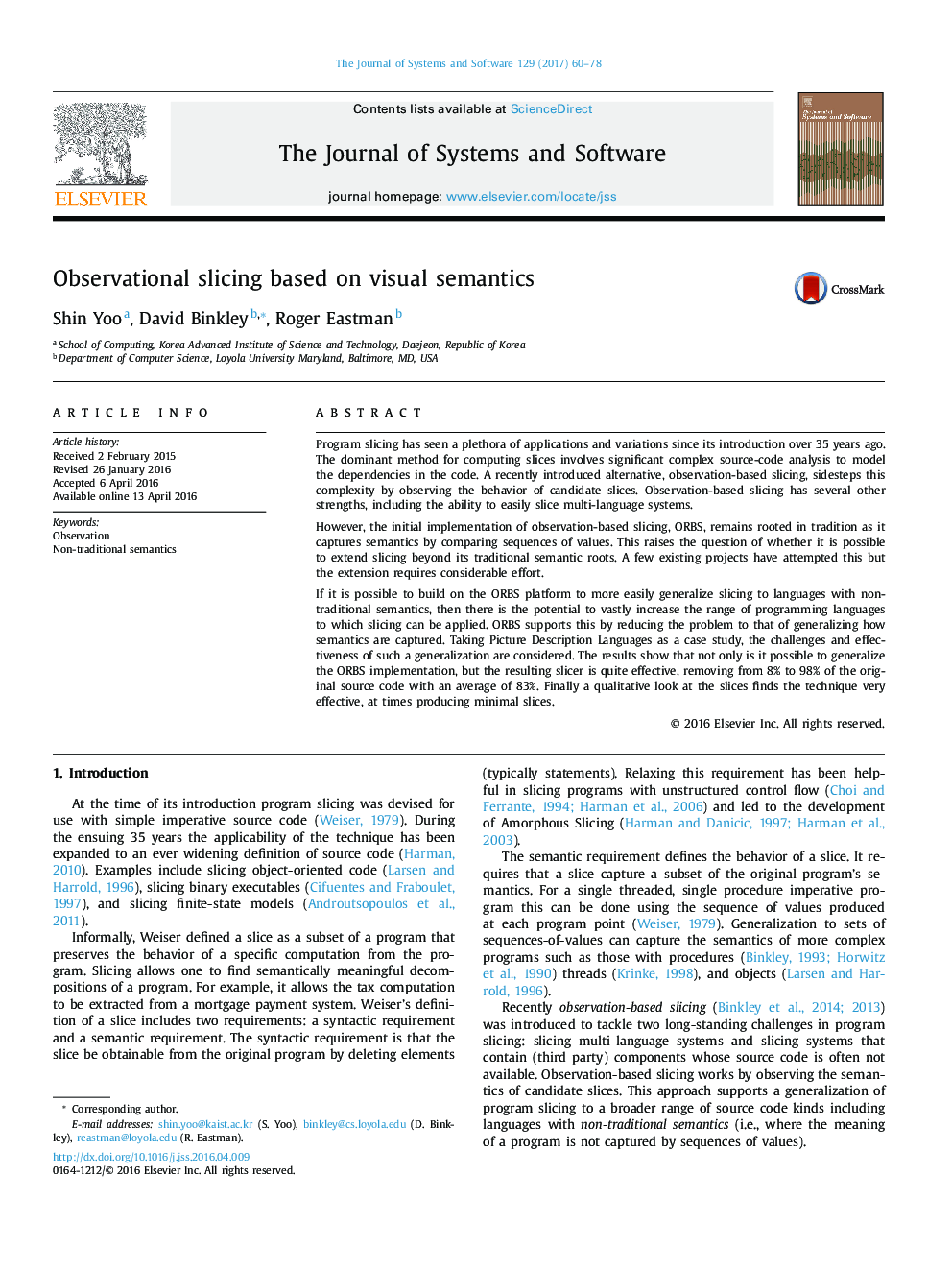| Article ID | Journal | Published Year | Pages | File Type |
|---|---|---|---|---|
| 4956439 | Journal of Systems and Software | 2017 | 19 Pages |
â¢We describe how to slice languages with non-standard semantics.â¢We present implementation of a slicer for Picture Description Languages.â¢We study the PDL slices and resulting diagrams both quantitatively and qualitatively.â¢We introduce a novel template matching for PDL slicing.
Program slicing has seen a plethora of applications and variations since its introduction over 35 years ago. The dominant method for computing slices involves significant complex source-code analysis to model the dependencies in the code. A recently introduced alternative, observation-based slicing, sidesteps this complexity by observing the behavior of candidate slices. Observation-based slicing has several other strengths, including the ability to easily slice multi-language systems.However, the initial implementation of observation-based slicing, ORBS, remains rooted in tradition as it captures semantics by comparing sequences of values. This raises the question of whether it is possible to extend slicing beyond its traditional semantic roots. A few existing projects have attempted this but the extension requires considerable effort.If it is possible to build on the ORBS platform to more easily generalize slicing to languages with non-traditional semantics, then there is the potential to vastly increase the range of programming languages to which slicing can be applied. ORBS supports this by reducing the problem to that of generalizing how semantics are captured. Taking Picture Description Languages as a case study, the challenges and effectiveness of such a generalization are considered. The results show that not only is it possible to generalize the ORBS implementation, but the resulting slicer is quite effective, removing from 8% to 98% of the original source code with an average of 83%. Finally a qualitative look at the slices finds the technique very effective, at times producing minimal slices.
